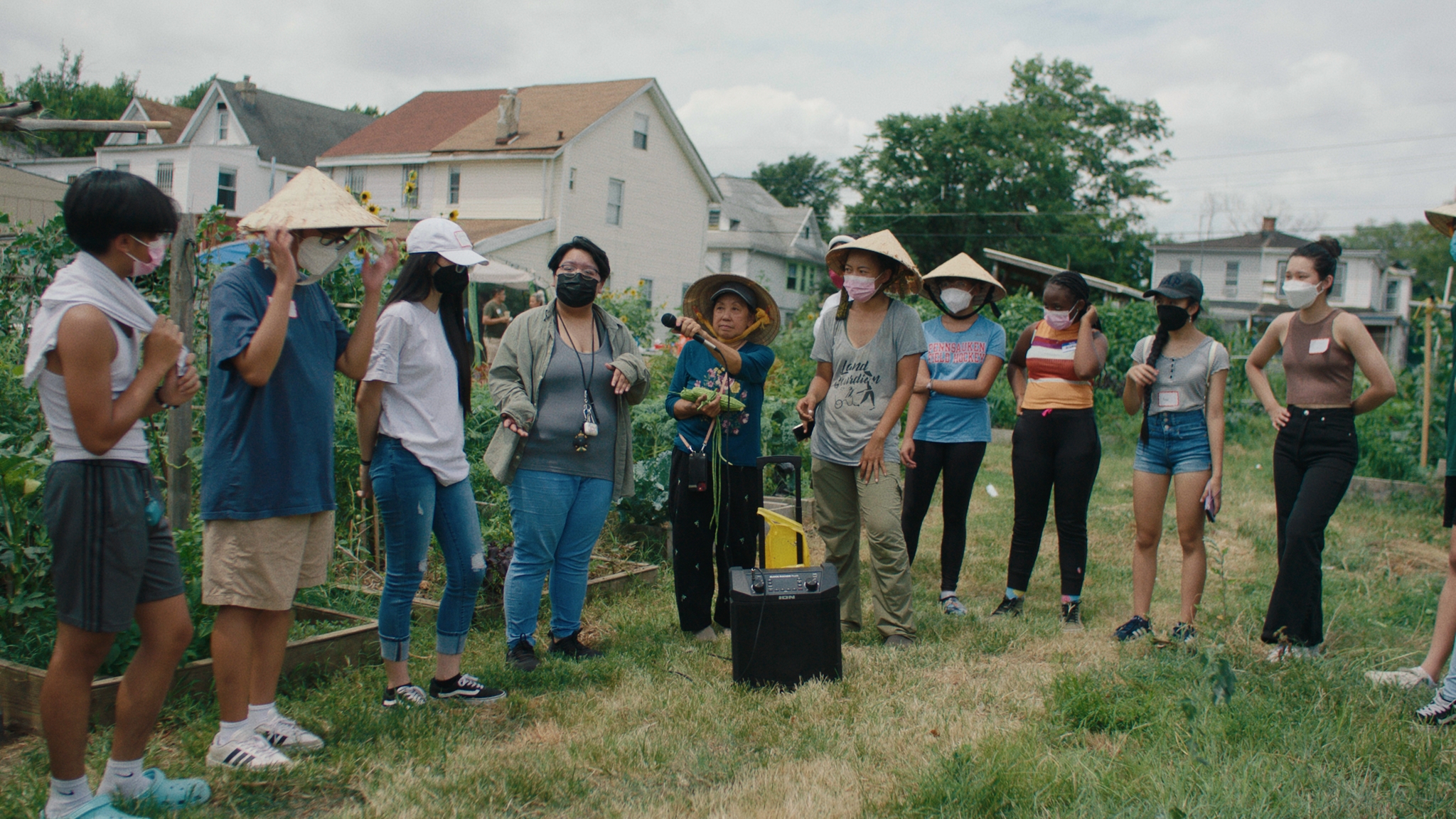
17 Aug Our Roots Are Already Too Deep: Fighting Systemic Erasure in Chinatown and Hòa Bình Plaza with Storytelling and People Power
BY GABE CASTRO
This article is part of a monthly column by Gabe Castro called “Reel Impact: From Screens to Streets.” The column explores contemporary film through conversations with Philadelphia-area community members and organizers.
Philadelphia has a long history of gentrification that has become an aggressive threat actively suffocating our neighborhoods. We see it in the quickly-built, muted slabs of buildings devoid of personality popping up in neighborhoods that have historically housed Black and POC families. We see it in the disappearance of beloved independently-owned shops and gathering spaces. And we see it in the removal of cultural murals and places of worship.
For Philadelphia’s last community of color in Center City–Chinatown–the threat of the 76ers basketball arena is interpreted as an act of violence. Having fought to exist in their refuge for over 150 years, the community rises once again to battle a multi-headed beast with an insatiable hunger. Further south, Philadelphia’s Southeast Asian communities continue a fight started in 2019 to preserve their cultural hub at Hòa Bình Plaza where their restaurants, their places of business, and their neighboring homes are threatened by developers. Despite over 12,000 signatures to save and preserve the cultural anchor, Hòa Bình Plaza on Washington Ave and 16th Street lies vacant after developer Streamline purchased the property and evicted the businesses during the pandemic.
Before these Asian communities staked their claim, these areas–South Philly’s Washington Ave and the northern part of Center City that is now Chinatown–were considered a no man’s land, desolate and unwanted. Now, the hard-won refuges for over 4,000 Philadelphia residents to live, work, play, and worship are at further risk of destruction and displacement. Understanding how these communities found themselves here, and how they grew and healed together in these previously forgotten places, inspires admiration and solidarity. Through the act of storytelling, these communities have been empowered towards action in hopes of preserving some of the last bastions of safety and culture for Asian populations in Philadelphia.
Taking Root & Hòa Bình Plaza
“We’re here because the U.S. was there,” posits Vietlead’s co-director Nancy Nguyen over archival footage of destruction in Vietnam in the opening of the organization’s documentary Taking Root: Southeast Asian Stories of Resettlement in Philadelphia. The four-part series highlights the journey of Southeast Asians in Philadelphia, and through 15 tumultuous stories of immigration voyages, unearths intergenerational trauma and ultimately reveals the power of resisting and rebuilding in America. It is a difficult piece that amplifies a history not shared in our school books or in mainstream media. Co-producer of Taking Root and co-director of Vietlead, Lan Dinh, explained in an interview with cinéSPEAK the inspiration for the film’s creation. While working with the Free Library of Philadelphia on their Chronicling Resistance project, she decided to document the stories during a time when her community was at risk of losing the places they’d carved out for themselves. She worried that not having an archive of her community’s history could leave them more vulnerable to gentrification. Dinh wondered if the stories she grew up hearing from her own family were shared by others in the community and if uniting behind, archiving, and acknowledging those stories could lead to activism and organizing to preserve these places facing erasure.
Dinh shared early edits of the film with the interviewees and found that they felt similar sentiments, surprised by the similarities in other participants’ stories to their own. “We’re fighting against the dominant narratives. There’s never been a collective story of our experiences and in this storytelling, we are weaving those stories together. We’re showing that we’re not alone.” Dinh goes on to explain that with this discovery, the community is able to acknowledge the weight of the violence they suffered and that it has always been systemic. With this understanding comes the tools and motivation to fight back against the real threat. Director and co-producer of Taking Root, Oanh-Nhi Nguyen, expands on the mission, saying, “This is to show the truth about what it means to be resettled in America. Without much support, under terrible circumstances, with no forethought, and without any resources.”
Taking Root blends intimate interviews with archival footage and animation. The animation emulates a storybook, walking us through the perilous journeys of the refugees and safely navigating us through difficult moments. The animation allows us to empathize with the stories and creates a safe space for viewers. Andrew Czudak and Emily Delp Poppa served as animators for the piece, and though neither of them had ever done animation before, you wouldn’t know that from watching it. Nguyen explained that the documentary was a space of exploration for all involved, featuring a predominantly Black and POC crew who tried new positions and supported one another.
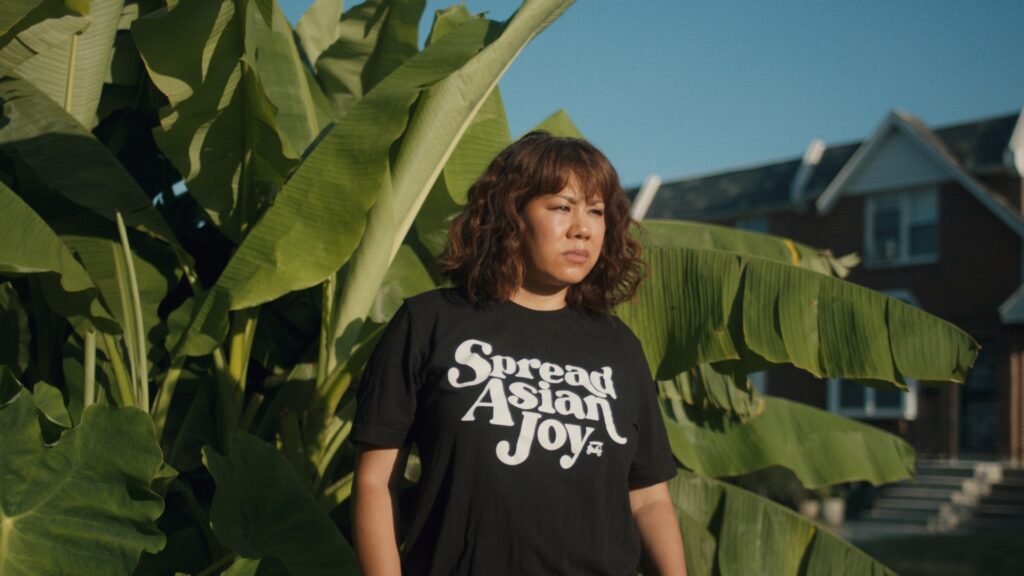
The creators have taken a delicate approach to not only capturing but also distributing these stories. The film had an intimate, invite-only screening at the Hòa Bình Plaza on August 13, 2023, where viewers watched together while being educated on the issues presented. Further, Vietlead equipped those viewers with discussion points that they hope the audience members will take to smaller screenings. “We want people to watch the film in their living rooms with 20 of their closest friends and family. And we want them to unpack and feel motivated, in a safe environment,” explains Dinh.
The decision to screen at Hòa Bình Plaza was intentional: the plaza was a strategic venue that served to educate the neighbors on the history of the communities who’ve called this place home. The screening also aimed to organize and inspire those living there to fight against the developers. The plaza is itself a character in the documentary, serving as a source of cultural comfort and a place of connection for the resettled community–a place where they could find pieces of home. They reclaimed these areas by growing their own cultural foods, nurturing commerce for financial growth, and creating a safe space to speak their own languages. Hòa Bình Plaza is facing harsh restructuring through residential housing promising single-family homes, with ample garage space, condos, duplexes, and multi-family buildings. With “affordable” options in the housing unit quoted at $240,000, you have to wonder who this residential development is for. After facing mass and abrupt evictions in the plaza, Vietlead and other organizations hope to protect the area from further destruction and displacement.
The Struggle Continues in Chinatown
While Southeast Asian activists fight to preserve Hòa Bình Plaza and their community spaces with storytelling, organizers in Chinatown face down the 76ers Arena. Taking Root features an interview with organizer and core member of the No Arena in Chinatown coalition, Debbie Wei. An educator and activist, Wei understands the power of documenting history and shares how she fought for the safety and rights of the Southeast Asian refugees in Philadelphia. In one heartbreaking story, she tells of a time when she found a rowhome housing 23 refugees with no heat, broken windows, and a single lightbulb. She worked to inform and unite them in a fight for safer housing.
Wei’s extensive knowledge of the troubling resettlement systems, the racist policies that pit white and Black communities against each other and wedge Asian communities between them, and the ways to resist come from her own history of fighting the many battles to save Chinatown. Since 1965, there have been numerous attempts to encroach upon and bulldoze through the cultural hub. These fights have been documented and the stories preserved through two documentaries. Save Chinatown (1973) directed by Jon Wing Lum covers the fight against the Vine Street Expressway. Look Forward and Carry on the Past (2002) directed by Debbie Wei, Barry Dornfeld, and Debora Kodish is about the proposal to build a baseball stadium. Asian Americans United is expected to start a new documentary about the current fight against the basketball stadium.
Media as a tool for social change has evolved over the years and for the recent fight, the organizers fighting the arena have gotten creative with their approach. The No Arena Chinatown team in collaboration with supporting organizations Asian Americans United, Asian Pacific Islander Political Alliance, POWER Interfaith, Positive Movement Entertainment, Students for the Preservation of Chinatown, Save the UC Townhomes, and PhillyCAM came together to film a parody music video, No More Wrecking Balls. A chorus of protestors sing, “You do not own our streets, our homes, we say: No arena here!” to the stylings of Miley Cyrus’s Wrecking Ball over footage of the protests in the city, revealing a strong alliance of community members throughout the city.
50 years ago, the Southeast Asian refugees featured in Taking Root arrived in Philadelphia, a sanctuary city and last resort for many. Philadelphia had already established itself as a refuge for Chinese immigrants who’d found themselves here after being pushed out from everywhere else. For the Chinese immigrants who moved to Chinatown, it was the Civil Rights Act of 1964–which acknowledged the exclusion of all marginal communities–that inspired immigration to the East Coast. At that time, they were fleeing incredible amounts of anti-Asian violence including lynchings, shootings, and entire communities being burnt to the ground. “They eventually settled in an area of the city that, at the time, was considered undesirable. And it remained undesirable all the way throughout my childhood. I remember, as a kid, going to Chinatown with my parents to buy groceries and it was considered skid row, the red light district. That’s where the Chinese were expected to raise their families,” explains Wei in an interview with cinéSPEAK. This atmosphere of desolation and ultimately residing in unwanted areas is echoed in Taking Root. When no one else would take them in, these vulnerable communities found themselves here. And even in these forgotten shadows of the city, they had to fight to belong.
Wei paints a vivid portrait of Chinatown as a cultural hub, a community staple where key moments of her life were amplified. Birthdays, graduations, funerals, and other foundational events took place in Chinatown. For Dinh and the participants of Taking Root, Hòa Bình Plaza is that place. In a blog post as part of her Chronicling Resistance project, Dinh echoes the sentiments of those in the film, sharing, “I remember going into Hòa Bình Plaza’s Sieu Thi Big 8 supermarket, eyeing the tamarind and sesame candy. Meanwhile, my parents would scramble to gather everything we needed for the week–groceries that we couldn’t find in West Philly like mắm tôm shrimp paste, fresh fish, calling cards to call our family in Vietnam, and freshly baked bread. I remember hearing and seeing so many other people that looked and sounded like my family.”
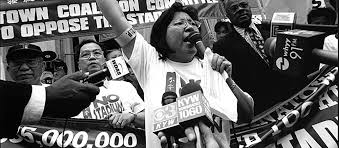
Wei goes on to explain in our interview how Chinese immigrants had similar battles to those in Taking Root, ones where racist practices had profound effects on the Asian communities alongside the Black and Brown ones. She shares a history of continual attacks on Chinatown starting with the neighborhood being put at risk during the national project Urban Renewal’s Vine Street Expressway initiative which hoped to bring suburban white families into the city for work. The Expressway served as a threat to the community’s existence with a ramp that would cut straight through the Holy Redeemer Church, which is a school, place of worship, and home for community gatherings. Though the community was able to save the church by having the ramp moved to eighth street, six lanes of traffic plowed through the neighborhood.
In the 1980s, new threats came in the form of a Commuter Rail Tunnel which unhoused entire blocks of Chinatown residents, despite never being completed. Then the Convention Center promised prosperity only to result in commuters crowding their neighborhoods. Wei explains these various strategic attacks, saying, “You’ve got a highway to the north, the convention center to the west, the commuter rail tunnel on the east, and The Gallery [shopping mall] to the south. And it really was a noose tied around Chinatown’s neck to choke the community out of existence.”
Then there was the Phillies baseball stadium proposal in the 2000s. “It came at a time of growth,” Wei explains. “This was right when Chinatown was starting to expand. Community development by and for the community is much slower, because we don’t have big bucks, and we’re not big corporations. Still, people were starting to build small businesses and were living up there.” After a tough fight, the protectors of Chinatown won and the Phillies stadium moved to South Philly, only to have a new stadium threatening them 20 years later.
Community Organizing and Resilience
Now, these same community organizers, alongside younger generations, are fighting against the new 76ers basketball arena proposal. It’s bittersweet to see activists who fought decades ago, some having been considered elders even then, fighting again for their community. Wei’s own children, who when young marched alongside her against the baseball stadium, are involved in this fight. Her daughter is currently one of the leaders of the spin-off coalition, Students for the Preservation of Chinatown (SPOC) composed of college student activists.
Chinatown has more than 4,000 residents who live there: it is a cultural epicenter for Asian Americans across the tri-state area. The impact of these violations and intrusions runs deep for activists and community members like Wei. “We’ve seen it across all communities in Philadelphia. To me, it is extremely violent because you’re taking these things, these memories and relationships, and ripping them apart. It’s not the kind of violence that you see in an emergency room. It’s the kind of violence that tears your soul.”
The organizers continue the fight without any signs of fatigue and they’ve found a lot of support in unexpected places. Coalitions have formed throughout the city in solidarity, proving the neighborhood’s impact on the culture of Philadelphia as a whole. There’s the Restaurant Industry for Chinatown’s Existence (RICE), made up of local Philadelphia restaurants big and small, including some James Beard Award winners like South Philly Barbacoa. RICE has expanded into other local businesses too, including bookstores, food co-ops, and laundromats. There’s the aforementioned college student-led group, SPOC. There have even been protests by Jewish leaders during Christmas, advocating to save Chinatown and opposing Jewish Federation Real Estate Group’s decision to honor David Adelman, a developer behind the 76ers arena.
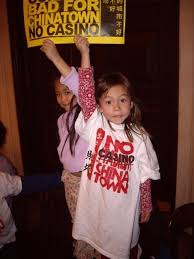
There are small groups, referred to as hives, within the No Arena in Chinatown coalition dedicated to specific initiatives. There’s an educator hive made up of teachers working to incorporate Chinatown into their curriculum. There’s a postcard hive for people to write postcards to their City Council Members that has resulted in roughly 4,000 handwritten postcards from across the city. And the No Arena Art Hive (NAAH) is to thank for the fabulous puppets and headpieces seen during protests and in the No Wrecking Balls music video.
Wei and Dinh are intent on educating their communities and inspiring younger generations. The fights are a complex mix of understanding where they came from, how they got here, and why they need to protect their communities at all costs. Wei imparts some lasting words: “Educating people is one of the most important parts of what I do. Because the people that are going to be out there fighting have their own memories of this place, and they’re under attack. It’s about building a root that is strong enough. So that when a bulldozer comes, they’re not going to knock it over. Because our roots are already too deep.”
For Dinh and the Vietlead team, the fight expands outward from Hòa Bình Plaza. Taking Root intends to elevate and archive these histories to support the fight across the country. To accomplish this, Taking Root has partnered with a national campaign with the Southeast Asian Freedom Network called the Southeast Asian Relief and Responsibility Act (SEARR) which demands that the U.S. take responsibility for the impact of its involvement in the wars in Southeast Asia and how it destabilized Cambodia, Laos, and Vietnam. It further demands that the U.S. provide relief for folks who are facing detention and deportation in Southeast Asian communities, which is a direct result of a failed resettlement system. 2025 will mark 50 years since the U.S. involvement in the wars in Southeast Asia. The film serves two missions: one in preserving and remembering the impact of these wars, and another in reminding or informing the public of their power. After the long and tumultuous fight to settle in a city that was ill-equipped to support them, the Southeast Asian community established itself in Philadelphia through strength and collaboration.
“The older generations are only going to get older. Without this film, their stories, their history, die with them,” explains Dinh. “But there are new, younger generations that need to know their roots, specifically their radical roots. So that we may know of the history, struggle, and resistance. To be inspired to organize and engage, to save our community today.”
Support Dinh and Vietlead’s efforts by following Vietlead’s local movement building actions online and by signing the petition to save Hao Binh Plaza. Follow the Taking Root documentary online as they will be posting more information on how to support and where to watch.
Support the No Arena Chinatown Coalition by signing the petition to save Chinatown, filling out an open letter to send to city leaders, and signing up to support the No Arena in Chinatown Solidarity coalition or joining a hive.
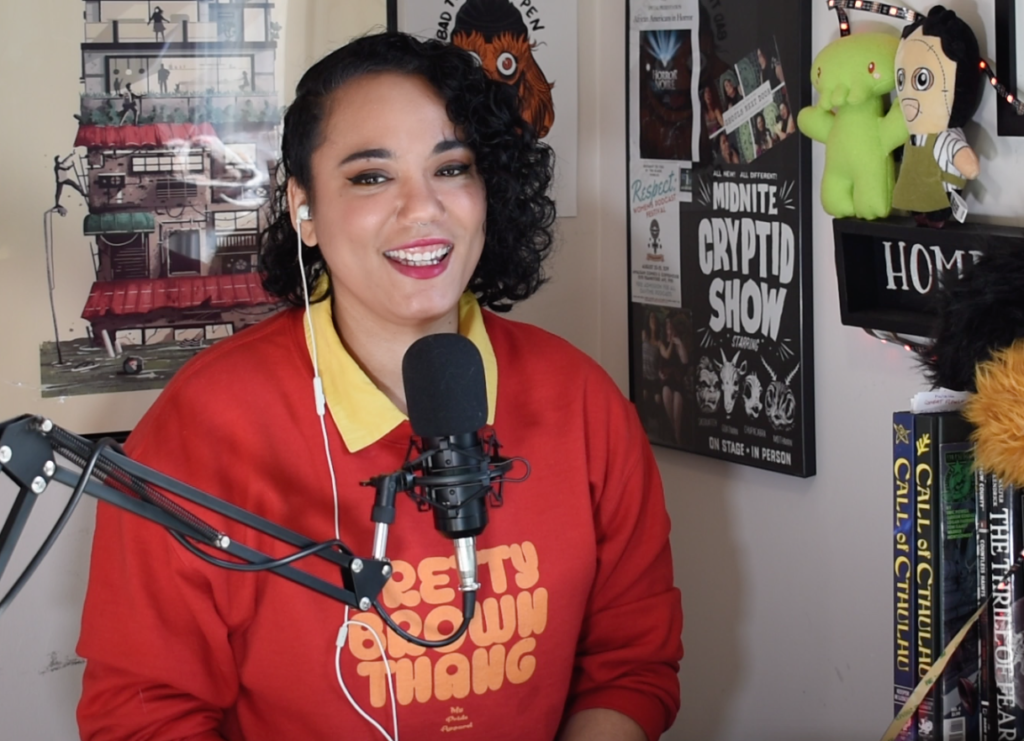
Gabe Castro is a Philadelphia-based Latiné multimedia professional specializing in the horror genre. Gabe believes media can be used as a tool to bring social change and works in all she does to create impactful and inspiring media. Gabe is a former cinéSPEAK Philly Beat Fellow.

Sorry, the comment form is closed at this time.